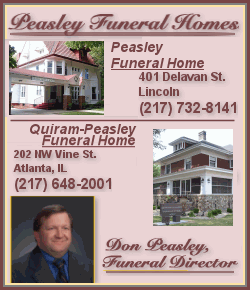|
 Illinois could soon join the 34 states that have boosted speed limits to at least 70 mph on some part of their road network since Congress scrapped lower federal limits nearly two decades ago. The trend has resulted in an increase in road deaths and injuries in those states, according to some studies, including one that found a 9 percent jump in deaths on rural interstates. Illinois could soon join the 34 states that have boosted speed limits to at least 70 mph on some part of their road network since Congress scrapped lower federal limits nearly two decades ago. The trend has resulted in an increase in road deaths and injuries in those states, according to some studies, including one that found a 9 percent jump in deaths on rural interstates.
A mix of populist politics and a culture that demands people be in multiple places at once are factors in pushing state lawmakers to support higher limits, as are advancements in automobile and highway engineering that have given people a false sense of security, some experts say. Other crash analysts contend that letting speed limits creep up poses no increased risk and point out that many drivers already are going faster anyway.
"The politics is that the public wants to go faster, they don't see it as a safety issue. So it's no surprise that legislatures have followed," said Jonathan Adkins, deputy executive director of the Governors Highway Safety Association. "Unlike with drunk driving and seatbelt use and even distracted driving ... the public just doesn't see speeding as a safety issue."

Gov. Pat Quinn has until Monday to sign or veto legislation raising the speed limit on rural interstates in Illinois from 65 mph to 70 mph starting in January. Eight counties in the congested Chicago area would be allowed to keep their limits lower.
The Illinois State Police and Quinn's transportation chief are strongly opposed, but the governor has not indicated which way he'll go, telling reporters Thursday, "We're looking at that closely." In a step sought by safety advocates, Quinn signed separate distracted driving legislation Friday to ban the hand-held use of cell phones by drivers.
Transportation Secretary Ann Schneider says high speeds increase the likelihood of a crash while simultaneously slashing the odds of surviving one. Illinois has a lower fatality rate than many other states, except when it comes to speed-related crashes on rural interstates.
Existing speed limits should be more vigorously enforced, Schneider says. Her office cites federal crash data showing that nearly a third of all road fatalities in the U.S. are speed-related.
A host of safety groups and the insurance industry back that view.
"What we find in states typically is that when speed limits go up it's ... a double whammy because ... drivers typically feel that they can go 5 to 10 miles an hour above the speed limit," Adkins said.
Congress opened the door to higher limits in 1995 when it did away with the widely ignored federal speed limits of 55 mph on most roads and 65 mph on rural roads. The federal speed limit law was passed to reduce fuel consumption after the 1973 oil embargo. Safety advocates lauded it for the subsequent drop in road deaths and injuries.
[to top of second column] |
 Its repeal was pushed by lawmakers who weren't necessarily advocating higher speeds but were angered by what they viewed as the federal government's intrusion into states' rights.
States quickly began boosting speed limits. Texas is tops with a stretch of private toll road between Austin and San Antonio where drivers can cruise up to 85 mph.
In Illinois, the measure's popularity was evident in the lopsided vote counts to approve it: 85-30 in the House and 41-6 in the Senate. The bill's long list of sponsors includes Republicans and Democrats.
Opponents cite a 2009 study in the American Journal of Public Health that looked at traffic fatalities in the U.S. between Congress' repeal of the federal limit and 2005. It found a 3.2 percent increase in deaths attributable to the higher speed limits on all types of roads. The increase was highest on rural interstates, jumping 9.1 percent.
The study estimated more than 12,500 deaths were attributable to the increased limits.
"The tradeoff is clear," said Russ Rader, a spokesman for the Insurance Institute for Highway Safety. "... Roads are a lot safer than they used to be, but the fact is the laws of physics have not been repealed."
The Illinois bill was sponsored by Republican state Sen. Jim Oberweis, who says most drivers already are going 70 mph or faster and that allowing other drivers to catch up would produce a safer, more even traffic flow.
"Thirty-four states have already had a similar increase to 70 or faster," Oberweis said. "So, we're kind of behind the times, I would say. ... I think this was just common sense good government."

___
The bill is
SB2356.
[Associated
Press; By JASON KEYSER]
Copyright 2013 The Associated
Press. All rights reserved. This material may not be published,
broadcast, rewritten or redistributed.
|